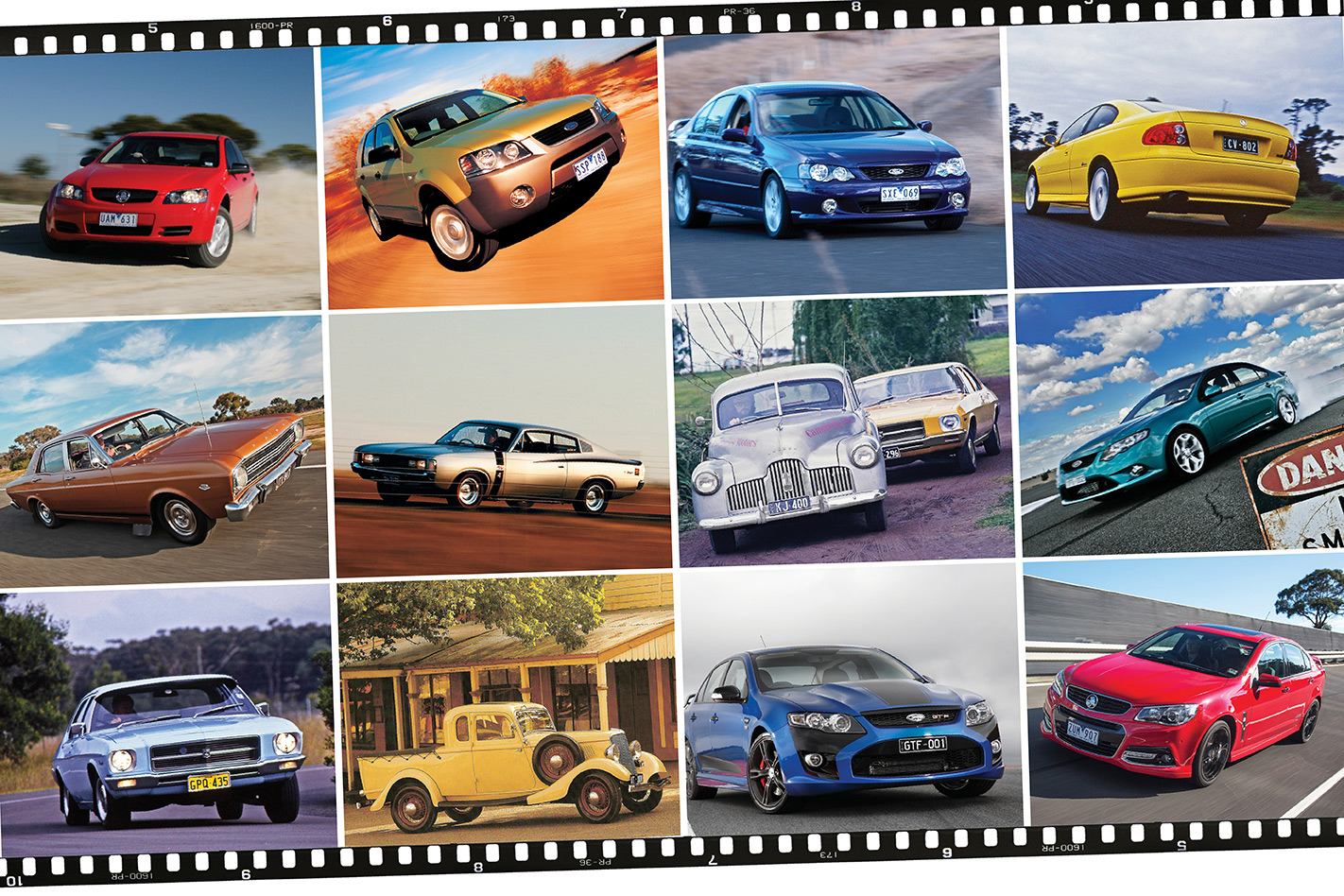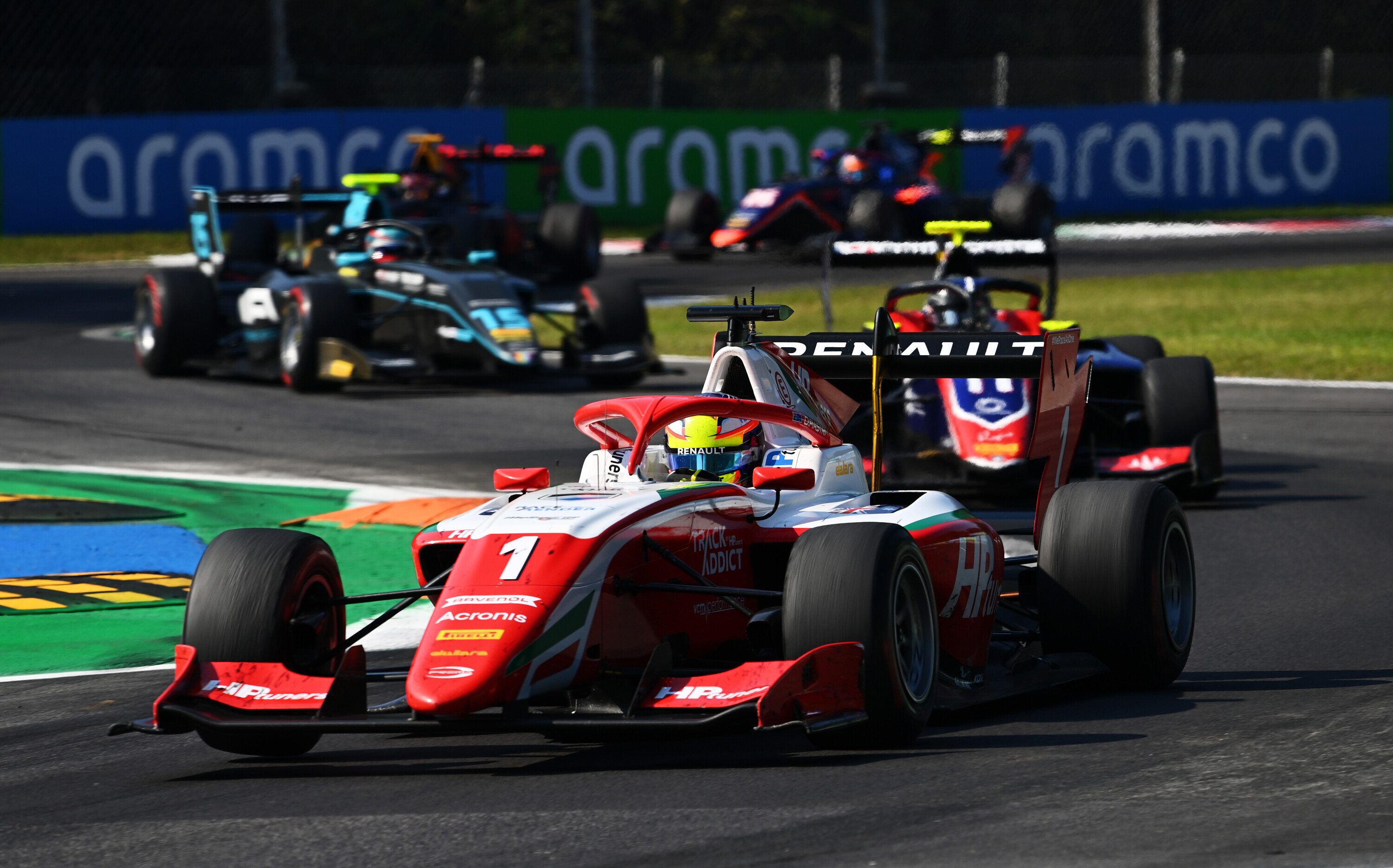Online voting in our Greatest Aussie Cars poll has now closed, but you can still get 100 entries in the draw for the Golf GTi by subscribing to Wheels!
Last year Wheels named the ten greatest Australian cars of all time. Since then two impressive challengers have emerged from Ford and Holden, each demanding its place in the Australian Hall of Fame.
To be eligible for our list it had to be built here, it had to be seen as great in its time, and still worth the title today. Wheels staff, current and former, voted in a secret ballot, and the results were ranked from 10 to 1.
Now, a couple of new players have entered the fold. These late entries are the world-class Holden VF Commodore and the thunderous FPV GT-F 351.
These two wild cards have garnered plenty of accolades, but are they worthy of inclusion in the top 10?
Using the poll on this page, choose your favourite from the twelve options and cast a vote for the best Australian car ever.
To help you decide, read what we said about the FPV GT-F and Holden VF Commodore below, followed by the Top Ten Aussies as rated by Wheels in May 2013.
Entries are now closed
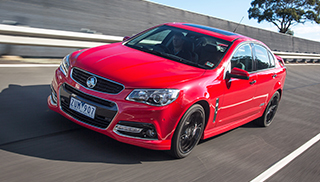
Holden VF Commodore
It’s hard not to be impressed by the VF Commodore. The harder you drive it, the better it gets. Indeed, the Aussie car has never been better than he VF, not by a long shot.
Cheaper than VE, yet more sophisticated and bristling with new technology that includes the latest colour head-up display. And it’s a better, more precise drive, with refinement levels that other Commodore (and Falcon) drivers won’t believe possible. Safer, more economical, with a stylish interior that exudes quality.
At Holden’s Lang Lang proving grounds, we tested four different versions of VF to discover if what’s under the mildly facelifted exterior is enough to change the way buyers perceive Holden’s home-grown family car. And the news is good: VF Commodore represents significant progress on virtually every objective front.
There will never be another all-Australian designed and engineered Commodore – or any other car for that matter – so let’s celebrate the best ever. The VF deserves as much.
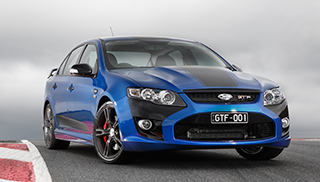
FPV GT-F
Make no mistake, FPV’s farewell vessel is a veritable missile. The GT-F auto hit 100km/h from standstill in just 4.68s, backed by a subtle blurting from its exhaust pipes as the ZF auto upshifgts with rapid-fire slickness.
Turn-in is as quick as it’s ever been in an FPV, and the GT-F has the tyre grip and chassis poise to maintain the directional change promised by the front end. For all the GT-F’s cornering and drifting bravado, it still manages to ride well.
If it wasn’t for the passion of the engineers, designers and program managers championing the GT-F, it would never have turned out the way it did. They really wanted to do the nameplate justice.
It was a labour of love, born out of the enormous affection for performance Fords in this country, and behind the scenes at Broadmeadows. As GT-F project manager Justin Capicchiano points out, it’s an emotional car for Blue Oval fans and also the guys working on it. “People would come up to you in the hallways at work and say ‘you’ve got to do a good one, you’ve got to make it special’.” And they have.
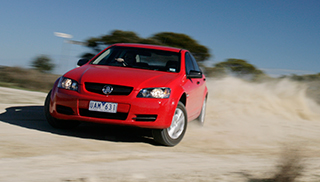
#01 – Holden VE Commodore
In many ways the VE Commodore is the best car Australia has ever created. At its core are virtues of strength, spaciousness, and sophistication. At last given the chance to design, engineer and develop a car from a clean-sheet starting point, Holden grabbed the opportunity with both hands. The 2006 VE is different from any earlier Commodore.
When the VE was launched, there certainly wasn’t a contemporary BMW that steered with the beautifully fluid accuracy and consistency of the Holden. Equally outstanding was the VE’s shape; a perfectly proportioned combination of dynamic drama and easy elegance, precisely and simply detailed.
The Holden heads our 10 Greatest for its design, engineering, value and versatility, but also because it’s a greater and much more significant achievement than any other car Australia has ever made. Holden began in 1948 with a basic design imported from America. With VE, the voyage was in the opposite direction. More than just a good honest car, this was the Commodore that proved, beyond doubt, that Australia’s got talent.
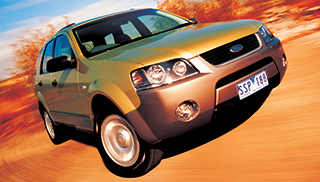
#02 – Ford Territory
In the end, only a handful of votes relegated the SX Territory to second place in our Top 10 showdown. It really was that close, and Ford’s 2004 all-roader deserves its place high in the list of Australian greats.
The Territory was a brave and brilliant departure from an accepted, comfortably familiar formula. It was a superbly executed crossover, with truly world-beating handling, ride comfort and practicality.
Territory made intelligent use of Ford Australia’s existing component set. It had Falcon’s 4.0-litre six-cylinder engine and four-speed auto, the ‘Control Blade’ rear suspension introduced in the 2002 BA, and shared the sedan’s engine box. But the rest of the body structure was new; it had to be, to accommodate seven-seat and five-seat versions. The front suspension and steering, which had to be compatible with AWD, was all-new and no-compromise.
Dynamics were a Territory strong point. It rode and handled and steered better than many crossover SUVs costing much, much more. Inside, the Ford had great seating and a myriad of places to stash stuff. It was every bit as useful as it was enjoyable to drive.
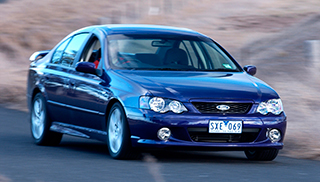
#03 – Ford BA Falcon XR6 Turbo
Nothing underlined Falcon’s 2002 great leap forward more emphatically than the XR6 Turbo. There was a new independent rear suspension beneath all BA sedans, sophisticated (for the time) electronic systems, a vastly improved interior and an exterior that looked nothing like the AU. But it was Falcon’s practically all-new six-cylinder engine that made the most difference.
The 240kW turbo ‘Barra’ of the new-for-BA XR6 Turbo model instantly made every Australian-made V8 then on sale seem stupid. Performance testing soon proved that neither VY Commodore nor BA Falcon V8s could match its pace. The super six’s spread of torque was broad and beautifully delivered. Sounded good, too.
BA’s mostly new chassis, especially the ‘Control Blade’ IRS, meant the XR6 Turbo wasn’t overwhelmed by its engine. There was a distinctly European flavour to the way the Turbo drove.
After years learning to expect as little as possible from Ford Australia and Falcon, the BA XR6 Turbo was a massive moment. Brilliantly quick, wonderfully refined and huge fun to drive, it snarled defiantly that Ford Australia had changed its ways.
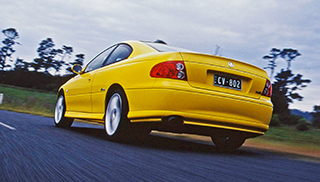
#04 – Holden V2 Monaro
Cunning and connivance was what it took to give the spark of life to a concept that brightened a dull era for the Australian industry.
Holden design boss Mike Simcoe had started work on a VT Commodore-based coupe at home. Work continued in secret in Holden’s studios as the conspiracy spread. The project was only revealed to Holden managing director Jim Wiemels four weeks ahead of the Sydney motor show. The American exec must have been surprised, but he let them build the concept car.
Totally unexpected, the impact of the Coupe Concept at the Sydney show, late in 1998 was so huge it must have registered on seismographs. Media instantly decided it had to be called Monaro and should be put into production pronto.
The car’s elegant and understated style emerged unscathed. Although a supercharged V6 version was offered initially, hardly anyone wanted the coarse and uninspiring 3.8-litre. But General Motors’ 5.7-litre Gen III V8, well, that was a different matter…
As conspiracies go, the Commodore Coupe was a surprising success.
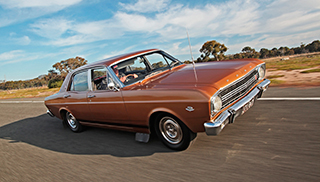
#05 – Ford XR Falcon GT
Ford Australia promoted its 1966 XR as the ‘Mustang Bred Falcon’, and the car won a second-in-a-row Wheels Car of the Year award. One of the chief reasons the trophy ended up on Ford Australia’s mantelpiece is that the company had responded to the magazine’s insistent calls for Made in Australia V8 power.
While Ford’s 4.7-litre (289 cubic inch) Windsor V8 was an option across the new range from its 1966 launch, it wasn’t until the following year that the Mustang claim really came true. The Falcon GT combined the high-performance 168kW version of the little Windsor V8 used by its American cousin car and a four-speed floor-shift manual, instead of the regular range’s three-speed.
Nearly all of the GTs produced were painted a bronze colour named ‘GT Gold’, and gold is exactly what the car earned at Mount Panorama in the Gallaher 500 the same year it was launched. The 1967 Bathurst victory of Harry Firth and Fred Gibson earned instant racetrack credibility for the GT, and provided the blueprint for generations of road-going V8 sedans to come. The arrival of the XR GT was a pivotal moment in our motoring history, one with enduring consequences.
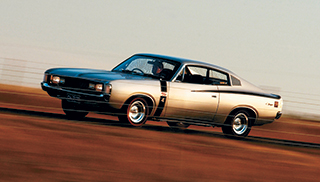
#06 – Valiant Charger E38/E49
These days $2 million might buy a car maker a new doorhandle design. In the early 1970s it was enough to develop a new variant of an existing car. Chrysler Australia’s Valiant Charger project relied on a brand of resourcefulness that was becoming a trademark of the Australian car industry. This can-do, low-cost spirit had already produced big results on small budgets; cars like Ford’s XR Falcon station wagon and Holden’s HK Monaro coupe. But the Charger was more audacious, more special.
One thing that made it so was stylishness. With the aid of a memorable and effective ad campaign with its ‘Hey Charger!’ catchline, the Valiant’s looks attracted hordes of paying customers.
Although V8 engines were part of the Charger model mix, it was the better handling high-performance versions of Chrysler’s in-line six that powered the car to greatness. Right from the beginning, the E38 option package lifted the power of the 4.3-litre (265 cubic inch) engine, with its trio of twin-throat Weber carburettors, to nearly 210kW. Revised gear ratios for the three-speed manual were also part of the deal. From Charger’s second year of production, 1972, the E49 option package upped power again, to 225kW, and included a four-speed Borg Warner manual.
Created on a shoestring budget by an outfit overshadowed by both Holden and Ford Australia, the E38 and E49 were the most outstanding cars produced by Australia’s brief but glorious late ’60s to early ’70s muscle-car era.
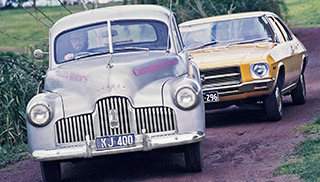
#07 – Holden 48-215
During World War II there was an urgent program to increase Australia’s capacity to make the complex machines needed to fight. But what, once the shooting stopped, would sustain the nation’s new-found manufacturing ability? The answer, Australia’s wartime Labor leaders decided, was cars…
That’s why a hat-clutching former locomotive driver from Bathurst was photographed beside the first Holden at its official introduction in November 1948. Prime Minister Ben Chifley had waited years for this moment. He’d been Treasurer when, with the war still raging, discussions began with both General Motors and Ford on how best to start a peacetime car industry in Australia. General Motors’ less costly scheme won government favour.
Today it’s impossible to imagine any result of government policy being as popular as that first Holden. The car, based on an unused design for a compact, post-war Chevrolet, was very basic: 45kW 2.2-litre (133 cubic inch) in-line six, three-speed column-shift manual and rear-drive. But it was roomy, tough and quicker than many contemporaries. At first, Holden production literally couldn’t keep up with demand.
The 48-215 wasn’t only a showroom success. Here was proof Australia could produce more than countless bales of wool. It was an accomplishment to be proud of, and it changed what Australians thought of themselves and their nation’s capability.
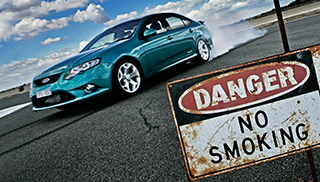
#08 – Ford FG Falcon
Ford’s FG Falcon is arguably a better car than any of the three million or so Falcons, spanning six generations, produced before it. Soon after launch it became the first Australian-made car ever to earn a five-star rating from the Australian New Car Assessment Program.
The super-fast performance variants from FPV may get the most motoring-mag ink. Recording the best 0-100km/h times ever seen from an Australian-made model will do that.
But it’s the most affordable versions of FG that also are the most outstanding. The basic models have benefited most from changes, everything from the switch to six-speed ZF automatic transmissions across the entire range to the introduction of better basic infotainment electronics.
The 2012 introduction of the 2.0-litre, four-cylinder Ecoboost variant was what propelled the FG Falcon into this elite company. The Ecoboost Falcon proves that Ford Australia’s engineers are as adept as any European at doing downsizing that works brilliantly.
It’s remarkable that Ford Australia managed, in hard times, to create such honest and admirable cars. Remarkable, too, that its work is sneered at or ignored by so many.
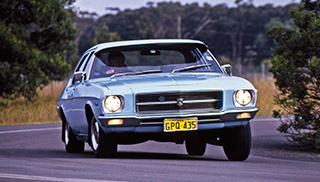
#09 – Holden HQ
Australians were to make the HQ the best-selling Holden of all time, buying close to half a million of them between 1971 and 1974. But that unrivalled sales tally of 485,650 isn’t the reason it’s here. This wasn’t a perfect Holden. Anyone who’d thumbed through the 1971 Car of the Year issue of Wheels would have known the HQ didn’t win because it was built for comfort, not for speed … nor corners, either, for that matter.
It was the first really all-new Holden since the 48-215, but unlike the first Holden, the HQ was engineered here. And the company made the most of the opportunity. As well as the Belmont, Kingswood and Premier sedan line-up, there was a wagon, a ute, a panel van, a coupe, a cab-chassis ute and a long-wheelbase luxury version. It was a massive effort, and highlighted the design and engineering ingenuity of the Australian industry.
The HQ also must be numbered among the best-looking cars Australia has produced. A Pontiac designer on loan from Detroit, John Schinella, styled the HQ, with plenty of help from young Australians in Holden’s studio. Its remarkably slim A-pillars and great forward vision are reminders that, in some ways at least, the past really was better.
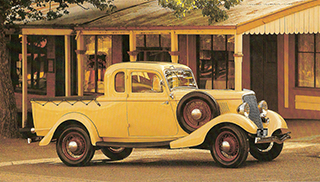
#10 – Ford Coupe Utility
How could Australia’s only contribution to the world’s vocabulary of automotive styles not make this list? Young Lew Bandt was the only designer employed by Ford Australia in the early 1930s, when the company’s management thought it might be worthwhile building something suggested in a letter from the wife of a Gippsland farmer.
The problem was that the car-based utes of the day were crude. Functional load carriers for sure, but cramped and uncomfortable to ride in, and lacking any hint of stylishness. The farmer’s wife yearned for something better.
Turning her dream into reality became a job for Bandt, then in his early 20s. His solution was based on Ford’s sidevalve V8-powered 40A Coupe. Instead of the tacked-on, separate tray of earlier utes, Bandt’s design clothed the cargo compartment in a smooth continuation of the coupe’s bodywork. It looked good, the coupe-size passenger compartment was roomy, and banks would loan farmers money to buy it.
The influence of Ford Australia’s 1934 Coupe Utility can be traced all the way to today’s Commodore Ute, but Bandt’s brilliance also reached across the Pacific Ocean. In the late 1950s first Ford, then Chevrolet, launched long-running model lines that owed a conceptual debt to the idea of the young Australian. Americans probably imagine their Ranchero or El Camino is as American as apple pie, but they’re the brainchildren of a bloke who undoubtedly preferred his portable pastry filled with meat.
We value your privacy as much as you do. We will not give your email address out to any other party. Bauer Media Pty Ltd (Bauer), collects information through this site to process registrations, send out invites, to communicate offers, competition or surveys. Bauer’s privacy policy is available http://www.wheelsmag.com.au/privacy-policy/ and contains information on how you can access or correct your personal information, entities we may disclose your personal information to (including overseas recipients) and how you can lodge a complaint.

